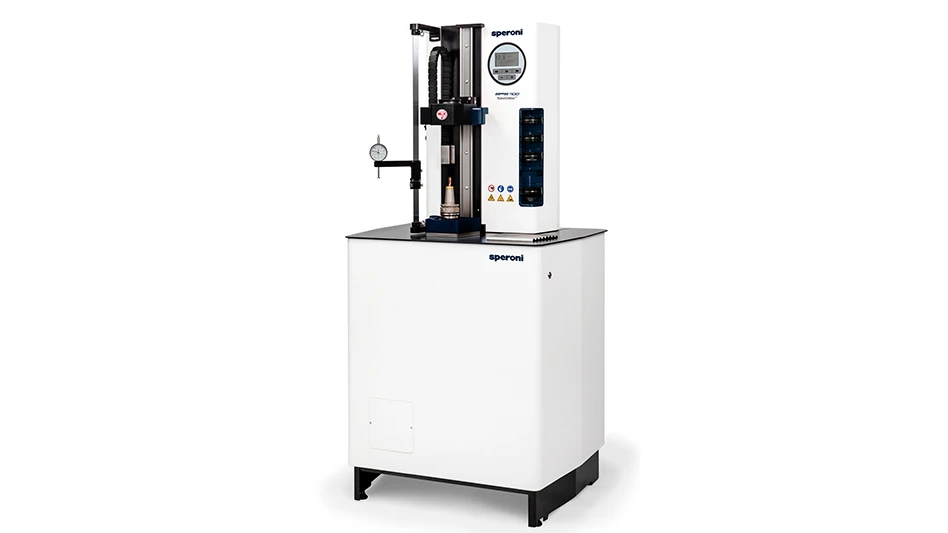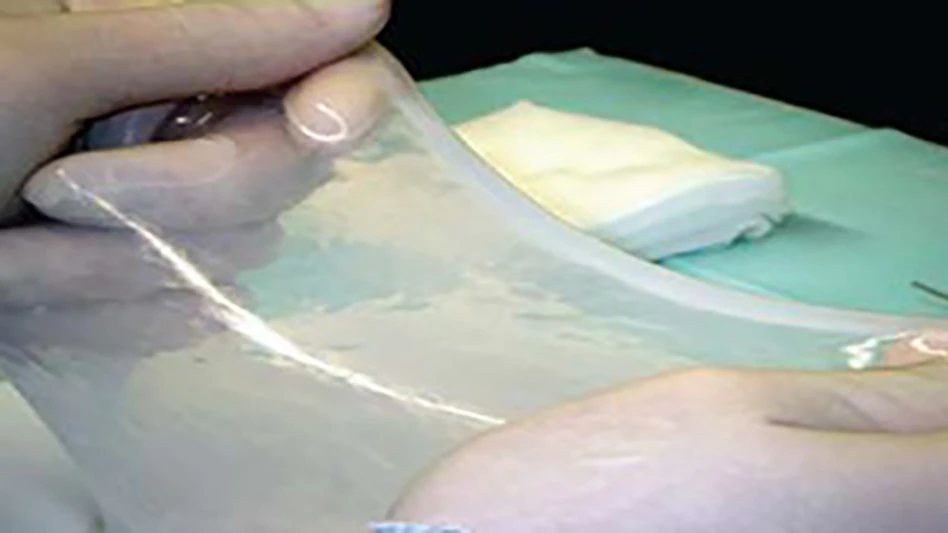
Editor's Note: This article originally appeared in the July 2025 print edition of Today's Medical Developments under the headline “Innovation is driving complex catheter shaft design”.

LUBRIZOL CORP.
Catheters may be thought of as little more than medical tubes, but that can’t be further from the truth. Especially during the last decade, they’ve transformed into precision tools that can be steered through blood vessels, deliver treatment, and assist in life-saving heart procedures – while being stronger, smarter, and designed to move exactly where doctors need them even in the most delicate procedures.
Catheters have evolved into high-tech medical instruments. Advanced features mean advanced challenges, however. Every new improvement tasks engineers to rework materials and structures to ensure these devices stay flexible, durable, and completely safe inside the body.
What does it take to create the next generation of catheters? What are the biggest hurdles facing the manufacturers of these life-saving devices?
Today’s catheters
Modern catheters are built for precision – they must place stents flawlessly, deliver instant feedback, provide support with multiple balloons, and navigate the most complex vascular pathways.
Multi-lumen extrusion has taken catheter technology to the next level. Due to multiple internal pathways, one catheter can serve multiple functions – reducing device count and improving procedural efficiency and patient safety. Doctors don’t need separate tools for balloon inflation, drug delivery, or guidewire placement – everything can now be managed within one catheter.
With reinforcement, catheters become more durable, responsive, and reliable when precise control is a must. Traditional braiding and coiling techniques – along with other, more novel reinforcement methods – balance strength with flexibility to help ensure catheters can move freely while staying under control.
Design challenges
There’s no such thing as a simple upgrade in catheter design. Every new feature requires engineers to rethink everything – from material selection to microscopic tolerances – to ensure uncompromised performance.
It’s even trickier in multi-lumen extrusion. More lumens unlock greater capabilities, but ultrathin walls create a dilemma. It’s a paradox – catheter walls are microscopically thin, yet they must be strong enough to perform flawlessly under stress.

There’s also the challenge of reinforcement. Braided and coiled reinforcements do more than just add structure – they’re key to performance. A catheter must strike a balance – smooth enough to glide, strong enough to push – and that comes down to the right materials and layering. Too rigid, it gets stuck. Too soft, it won’t make it to the treatment site.
Meanwhile, it’s one thing to build a strong and flexible catheter but integrating miniature sensors and electrodes – without affecting performance – is another. Data collection is a key feature of a fast-growing number of medical devices. The problem is sometimes, metal and plastic just don’t mix. Engineers must come up with ultrathin adhesives and smart embedding techniques to keep sensors and electrodes firmly in place.
Critical performance factors
Every catheter has a job to do, and its design needs to match the task. Some factors change based on the application, but a few remain critical across the board.
- Torque control: If a surgeon rotates the catheter’s proximal end, the tip needs to follow instantly and accurately as any delay or stiffness could spell trouble. When it comes to torque control, denser is better. A tightly braided reinforcement structure helps ensure smooth force transmission to make catheter navigation more precise.
- Pushability and trackability: A catheter should move naturally and smoothly, like it’s an extension of the physician’s hand. The secret to effortless navigation is the right mix of stiffness and flexibility – rigid at the proximal end for pushability and soft at the distal tip for easy maneuvering.
- Kink resistance and durability: Kinking can be a serious issue when catheters bend too far, so coiled reinforcements are used to keep them flexible and efficient, especially in delicate heart and brain procedures.
- Tolerances and manufacturing: Catheter performance depends on extreme accuracy to the micron. To prevent tiny errors from affecting function, manufacturers are doubling down on laser technology, automation, and high-precision extrusion.
Key materials
Designing a great performing catheter is like crafting a great recipe – it’s about getting the perfect blend of ingredients. When the wrong material is in play, kinks, friction, and failure are real possibilities. Material selection is make or break when designing a good catheter. Let’s take a closer look at some of the most common materials and their impact on performance.
Structural materials
- Pebax (polyether block amide): Pebax is a high-performance thermoplastic elastomer made of alternating blocks of polyether, which are soft and flexible, and polyamide, which adds rigidity and structure. With the right balance of elasticity and strength, it’s one of the most used materials in catheters. Manufacturers can create shafts with different stiffness levels – firmer at the proximal end and softer at the distal end – making Pebax ideal for devices needing pushability and maneuverability.
- Nylon 12 (synthetic thermoplastic polymer): When a catheter shaft needs to be a little stiffer, Nylon 12 – polyamide 12 (PA 12) – steps in. Known by trade names such as Grilamid and Vestamid, it offers strength and flexibility for semi-rigid shafts. Nylon 12 is also a go-to material for semi-compliant percutaneous transluminal angioplasty (PTA) and percutaneous transluminal coronary angioplasty (PTCA) balloons, where controlled expansion and durability are key. Unlike ultra-soft materials, it provides just enough stiffness to maintain structure without compromising too much on flexibility.
- TPU (thermoplastic polyurethane): If more flexibility is needed, TPU-based materials (such as Lubrizol’s Carbothane, Pellethane, Tecothane, and Isoplast) are widely used in catheter shafts and soft, compliant balloons requiring exceptional flexibility. Whether for a highly flexible catheter or a balloon needing to expand smoothly under low pressure, TPU delivers the required softness and adaptability.
Lubricious materials
- PTFE (Polytetrafluoroethylene) liners: PTFE’s ultra-low friction properties make it a go-to for lining the catheter lumen, ensuring smooth guidewire passage and effortless device deployment. Its nonstick nature helps reduce material buildup, lowering friction and keeping performance steady throughout the procedure.
- Hydrophilic and hydrophobic coatings: These coatings also play a crucial role in making catheters and guidewires glide smoothly. Unlike PTFE, which has built-in low-friction properties, hydrophilic (water-attracting) coatings become slippery when exposed to fluids. This makes them well suited for procedures requiring enhanced trackability and low insertion force. Hydrophobic (water-repelling) coatings, while less slippery, repel fluids and are useful for keeping surgical tools clean by preventing blood and tissue adhesion.
Reinforcement materials
- Braided reinforcement: Stronger, more flexible, and resistant to kinking, braided reinforcement helps catheters perform better by weaving together metal or polymer filaments. Engineers tailor weaves and materials to meet the demands of complex vascular procedures.
- Coiled reinforcement: By integrating tightly wound coils into the catheter wall, coiled reinforcement improves axial strength and pushability without sacrificing flexibility – perfect for steerable and deflectable designs.
- Hypotubes: A rising innovation in the field is hybrid construction – combining multi-lumen extrusion with laser cut hypotubes (thin-walled, small-diameter tubes typically using stainless steel or Nitinol) to improve durability without sacrificing flexibility. Hybrid tubes provide a solid structure with excellent torque transfer while allowing flexibility. In addition, steel coils and braided reinforcements work together to keep them strong and pliable. Their combination of durability and flexibility makes them a solution for structural heart interventions, neurovascular procedures, and catheter-based therapies.
- Liquid crystal polymer (LCP) reinforcement: If MRI is to be the preferred or sole imaging technique (e.g., to avoid harmful CT radiation in children), there’s the possibility of using LCP as reinforcement. Offering a fresh take on catheter reinforcement, LCP delivers strength and flexibility without the downsides of traditional metal braiding. LCP’s MRI compatibility is one of its biggest advantages. Metal reinforcements, such as stainless steel or Nitinol, can disrupt scans, making precision imaging harder, while LCP-based reinforcements do not cause imaging artifacts.
Innovation ahead
From strength to maneuverability, the latest material advances are improving nearly every aspect of catheter performance. As these devices evolve, built-in sensors and electrodes are stepping up to track temperature, pressure, and flow, but integrating them into conventional designs isn’t simple. Achieving precision is a must, but integrating the sensors comes with some big engineering hurdles.
It’s tough keeping delicate electrodes or thermocouple wires in place when the body is always shifting. Add sensors to the mix, and it gets trickier – metal and plastic don’t naturally adhere, so engineers must find new ways to make it work. Specialty adhesives do the job for now, but they’re not always reliable. Some manufacturers, meanwhile, are looking into embedding sensors in layers, though it’s still an emerging technique. As a result, overcoming these engineering and accompanying regulatory challenges remains a key focus.
The reality is catheter technology is heading toward a future of even greater precision and versatility, where further innovations including radiopaque additives for real-time imaging and bioabsorbable polymers herald the next generation of devices.
Advancing catheter technology takes teamwork – strong partnerships with materials manufacturers help refine materials, reinforce structures, and add smarter components. Ultimately, working together is what drives safer, more effective, minimally invasive procedures.
With a focus on engineering, materials, and manufacturing, companies at the forefront of catheter innovation are making advancements that’ll elevate standards for patient care worldwide.
The Lubrizol Corp.
https://www.lubrizol.com/health/medical

Explore the July 2025 Issue
Check out more from this issue and find your next story to read.
Latest from Today's Medical Developments
- Teleflex sells acute care and urology businesses for $2.03 billion
- HANNOVER MESSE: Where research and manufacturing meet
- What’s next for the design and manufacturing industry in 2026?
- Arcline to sell Medical Manufacturing Technologies to Perimeter Solutions
- Decline in German machine tool orders bottoming out
- Analysis, trends, and forecasts for the future of additive manufacturing
- BlueForge Alliance Webinar Series Part III: Integrate Nationally, Catalyze Locally
- Robot orders accelerate in Q3





